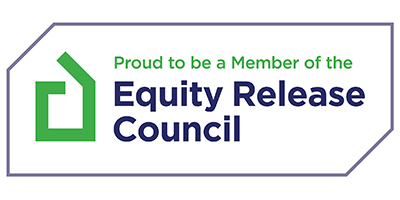In this article
As your mortgage term progresses, you’ll eventually reach a point in time where your initial fixed mortgage period is ending. Once you are at this point, you may be wondering what you should do next.
The majority of homeowners will look to do a remortgage, whether this is to find a better rate or as the name of this article suggests, to release the equity that is sitting in their property.
If you took out your mortgage out through UK Moneyman originally, a member of our team will be in touch with you well in advance to make sure that you don’t fall onto your lenders Standard Variable Rate.
Remortgaging to Release Equity
Explained in 37 seconds
Find more videos like this on MoneymanTV
Let’s Recap – What is a remortgage?
So whether you are knowledgeable already or are unsure of what is going on, it’s important to make sure we understand first and foremost, what a remortgage is.
A remortgage is the act of replacing an existing mortgage with a newer mortgage, for a specific purpose, be that for better interest rates than you could be moving onto, or to release your properties equity.
Your remortgage will generally be with a different lender, with criteria better suited to you. If you find a new deal with the same lender, this is called a product transfer mortgage, which you can read more about in our article “Can I remortgage with the same lender?“
The alternative to either of these options, is to remain on your lenders Standard Variable Rate (SVR), which sits above the Bank of England base rate and generally is a lot more costly for homeowners.
It is very rare that this would be the best option for you, though an experienced mortgage advisor will review your case to be sure. If it does happen to be the best option for you, your advisor will inform you so with complete transparency and honesty.
What is equity & remortgaging to release equity?
Equity is the difference between the value your property is currently sitting at, and the remaining balance of your mortgage.
For example, if you initially had a 20% deposit for a £100,000 house, you will have had a £80,000 mortgage. Now let’s say it’s a 25 year term, with a 3.5% interest rate.
5 or so years in to your term, you could have paid off somewhere around £10,000 from your mortgage balance, bringing it down to £70,000. If your home is still worth £100,000, you have £30,000 of equity sitting in your property.
A remortgage to release equity is the act of taking out a remortgage, as a way to release some of these funds, for a purpose of your desire. Depending on your circumstances, you may qualify for later life lending.
Why do people remortgage to release equity?
When it comes to remortgaging, there are lots of reasons why people may choose to do so. Be it for a better deal, for releasing equity or something else, it is always a popular option.
Looking at remortgaging to release equity, there are lots of reasons in itself why this may be a preferred option. Below we have compiled a short list of the most popular reasons why someone may look to do this.
Remortgage for Home Improvements
Many homeowners will, a few years into home ownership, fancy a bit of a change of environment. Perhaps after getting used to the property, they realise they need more space for a growing family, or a home office.
Whilst some will think about moving home, remember, you’re a homeowner now! Depending on your location and whether or not you need planning permission, you can make these alterations to the home you already have!
By taking out a remortgage to release equity, you may be able to cover the funds of the works that you are planning to have taken out on your home. This depends on the level of equity within your home, and the costs of the work you’re looking to have taken out.
Some lenders will want to see quotations for the works though, so it’s important to know what you want done ahead of time.
Remortgage to Consolidate Debts
During your time as a homeowner, you may find that you have come into some credit concerns. You may have taken out significant loans and found yourself in financial hardship, with not a lot of disposable income per month.
Before you find yourself struggling to meet your credit commitments, you may be able to look at consolidating these payments into your mortgage via a remortgage for debt consolidation, making it a manageable monthly payment for yourself.
The downside is, because you are borrowing more money, generally over a longer period of time than the original loan payment might have been, you will be paying back much more interest overall.
Disclaimer:
You should think carefully before securing other debts against your home. By adding your unsecured debts to your mortgage, which is secured on your home, you are potentially putting your home at risk if you cannot make the required repayments.
Although the total monthly cost of servicing your debt may have reduced, the total cost of repayment may still have risen as the term of your mortgage is longer than it may have taken to repay the debts originally.
Remortgage to Buy Another Property
As your tenure into homeownership progresses, some may look to remortgage to buy another property. This type of process can be for both residential and buy to let purposes.
By remortgaging to release equity, you can cover the costs of the deposit on your purchase. When looking to buy an additional residential home, you’ll need to cover two lots of mortgage payments, so you will be judged on your income before you can proceed.
Alternatively with a buy to let purchase, you will be generating additional income from the monthly rent. Providing it can pass a lenders stress-test on the projected rental income, being deemed enough to cover the costs of a mortgage, you shouldn’t have too many troubles.
Disclaimer:
The Financial Conduct Authority does not regulate some types of buy to let or commercial mortgages.
Remortgage to Gift a Deposit
If you are a parent (birth or adopted), grandparent, carer or legal guardian, there may come a point in time where the kids you raised are ready to or may already have flown from the nest, spreading their own wings.
There may come a time, whether it’s straight away or down the line, that those kids decide they want to buy their very own home. The problem they might have though, as many younger first time buyers find today, is that they can’t afford the initial deposit.
Monthly payments might not be an issue, but that initial boost is what gets the ball rolling. Whether it’s to top-up their savings, or donating the full amount, you may be able to remortgage to release equity from your own home, as a means of gifting your child their deposit.
This is a very popular option nowadays, often referred to as the “Bank of Mum & Dad”, allowing many first time buyers find their footing on the property ladder, when they otherwise might not have been able to.
It’s important to remember that a mortgage lender will need to see evidence of your deposit too, and a form signed to confirm it is purely a gift and not a loan to be paid back.
Remortgage to Release Equity (For Something Else)
There are also a selection of more miscellaneous reasons as to why someone may remortgage to release equity.
Some may want to fund a wedding, to buy a new car or to go on holiday somewhere nice. Others may use it for inheritance or to supplement their own income.
It’s important to note, however, that depending on what you use it for, it could affect how much you can take out. Your mortgage lender will also need to approve your reason for releasing equity.
So long as you inform the mortgage lender of what you are looking to use your released equity for, and you have a suitable reason, you shouldn’t have too many issues in taking this route.
Speak to an Advisor – It’s Free!
Schedule a free callback from one of our experts today.
- All situations considered
- Transparent and honest mortgage advice
- We search 1000s of purchase and remortgage deals
Our customers rate us 4.9/5
How to remortgage to release equity?
In order to release equity, you’re going to need to remortgage.
The best people for the job are mortgage brokers like us, who are able to compare remortgage deals from various sources, finding the best mortgage for your circumstances, with favourable rates.
When it comes to a remortgage, the process will generally be pretty straightforward, much like a regular purchase would be. A lender will assess your affordability, your mortgage advisor will match you up with various criteria, just like the first time around.
The difference this time of course, is informing the lender that you would like to release equity and what you would like to use that equity for, so that they can approve this for you.
Free Remortgage Review
If you are nearing the end of your initial fixed mortgage period and are looking to take out a remortgage, whether that is a remortgage for better rates or a remortgage to release equity, book your free remortgage review today and we’ll see how a trusted and experience mortgage broker like us can help.







